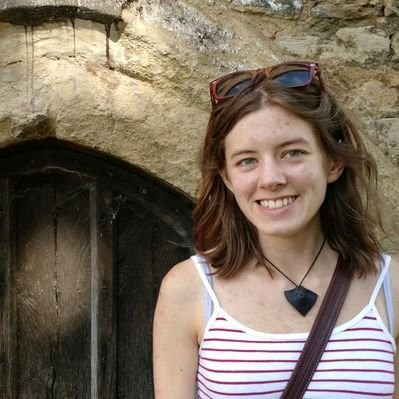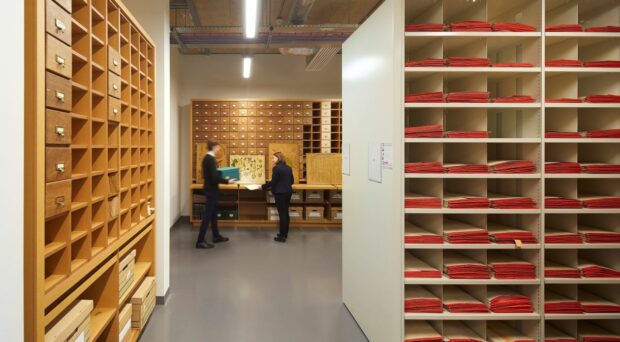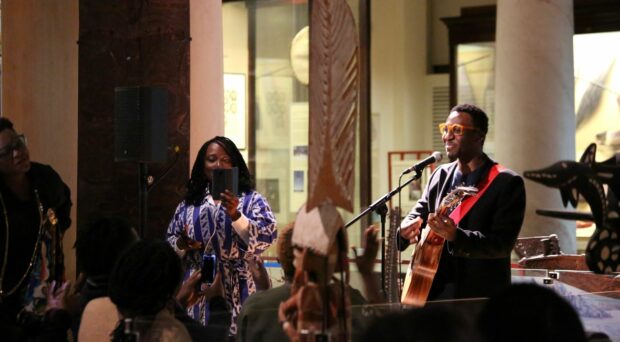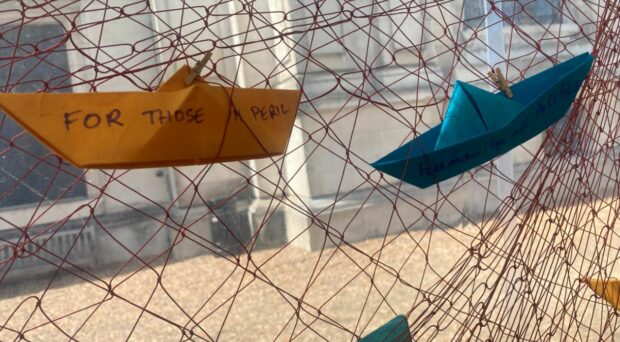I fell in love with the Anglo-Saxons the first time I visited the reconstructed village at West Stow. There was something about the dusty landscape and twisted pines, the mingled smell of woodsmoke and baking sand, the specific sound of green wood splintering around an axe.
I was 10 years old and I’d moved with my family from a little island boasting a Bronze Age entrance tomb (my favourite play house) and a whole lot of boats, to the wide-open landscapes of Norfolk. Growing up, the rest of the world was a very abstract concept: elephants, trains and dragons fell into the same category of possibly real ‘things from TV’. Compared to the mainland, Anglo-Saxon times felt a lot more like home.
I spent the following years making little leather shoes and reading Old English poetry (it was a weird time). I had a brief panic when I started looking for something to study at uni and contemplating a normal life, but I was saved by Anglo-Saxon, Norse and Celtic Studies. I am still recovering from the luck of finishing my Master’s thesis to find an advertisement for an internship at the Museum of Archaeology and Anthropology which would look at how to incorporate local Anglo-Saxon archaeology into KS2 education sessions.
In 2011, preliminary excavations preparing for the housing development at Trumpington Meadows uncovered evidence of a small Anglo-Saxon settlement. The site consisted of 4 sunken-featured buildings (the most common kind of structure in Anglo-Saxon settlements but still of disputed form and function), and a 15m long timber-framed hall. Close to one of the smaller buildings there were 4 inhumation burials laid roughly East-West. The whole group is interesting for a number of reasons but it is grave 1 that demands special attention.
Grave 1 contained the skeleton of a young woman who was probably not much older than 16 at the time of her death. She was surrounded by iron fittings believed to be the remains of a wooden bed. Anglo-Saxon bed-burial is rare; only 16 other examples have been found in Great Britain. They seem to have been most suitable for young, relatively wealthy women who were interred in the second half of the seventh century. The Trumpington example is special because the woman was buried with a gold-and-garnet pectoral cross (1 of 5 ever found in the UK, 4 of which are associated with female burials, the fifth with the tomb of St. Cuthbert) and matching linked pins (the only example from the period worked in gold).
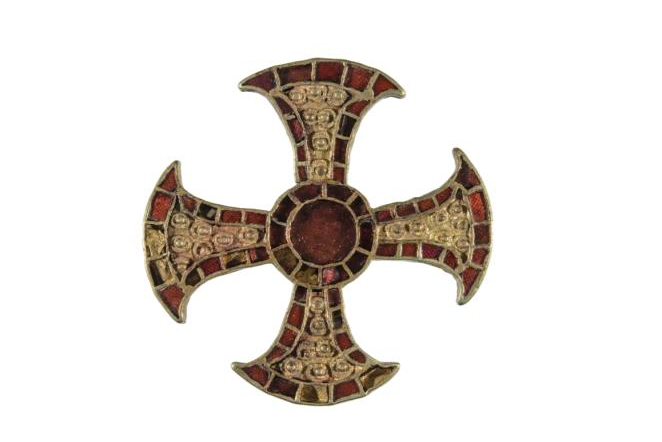
These treasures (gifted to the Museum of Archaeology and Anthropology in 2017) offer a glimpse into international trade networks that sourced garnets from South Asia, of the power and faith of young Anglo-Saxon women, and of early Christian communities in the East of England. I wanted to use this evidence to show students the scale of Anglo-Saxon imagination and creativity. I love the Trumpington cross because it is so very tiny, so very beautiful and so unbelievably captivating. I can’t walk past its corner on the ground floor of the museum without feeling a little wave of awe break over my head: that feeling is a powerful tool for inspiring children to take an interest in local history.
I also wanted to tell a personal story. The burial itself is incredibly special and the person it belonged to so obviously cared for by her community. As far as it is possible to tell, the bed was made of Ash in long planks with a carved headboard. A mattress of some organic and vanished material was placed on top of a hammock-like structure which was fixed to the iron fittings that are on display in the museum. The mattress was topped by a woollen blanket that left impressions of on some of the surviving ironwork. The woman was probably dressed in a long woollen underdress, the neck of which might have been closed with the linked pins, or else they secured a veil at her throat. A collection of tiny glass beads suggests that the edge of her veil (or wimple) was beaded. She would have worn a woollen outer layer which was belted (a copper-alloy chain from which she could suspend personal items is all that remains). On her belt was a small knife and a composite bone comb. The Trumpington cross was found on her upper chest and might have been worn as a pendant or stitched to her clothes. There is one detail that brings the scene to life for me: The Trumpington woman’s head was tilted very slightly, as if it had been resting on a pillow. The people that buried the Trumpington woman made her comfortable. She would have looked like she was sleeping.
The education session I designed allows students to independently explore the wider context of the burial by looking at Anglo-Saxon identities through objects on display in the museum. The students will explore the museum through the eyes of an Anglo-Saxon person who lived in the settlement at Trumpington Meadows. What might their house have looked like? What was their favourite food? How did they dress? and what survived in the ground to tell us what kind of person they were? They will also reconstruct the grave 1 burial using replica objects to explore who the Trumpington woman might have been and what she meant to her community. I was given an extension to the initial three-month internship so that I could do some audience research and test some of my ideas. It was really valuable to be able to discuss my plans with the target age group who were the most constructive and thoughtful team I have ever worked with! I think the consultation contributed to making a session that gives students the freedom to explore the Anglo-Saxon collections at MAA and draw their own conclusions about the Trumpington evidence.
During my internship I learnt that it is far more difficult to make museum collections accessible to seven-year-olds than adults. The experience challenged my ideas about what a museum is for and how we share knowledge in a way that gives everyone a fair chance to benefit. Most of all, I had the best time going in to the museum every day and seeing how excited visitors were to see the Trumpington display. Talking to people and hearing how each person connected with the story was really inspiring. I’ll never stop thinking about the Trumpington woman and I can’t wait to learn more.
You can explore the Trumpington finds using the MAA’s online catalogue: https://collections.maa.cam.ac.uk/index.php?cmd=home

